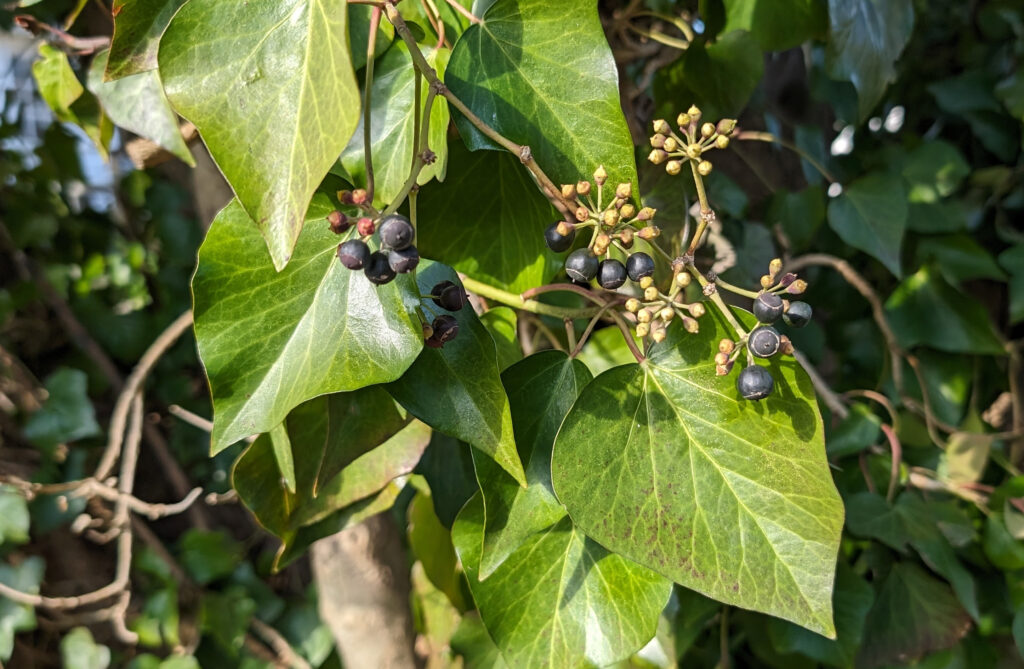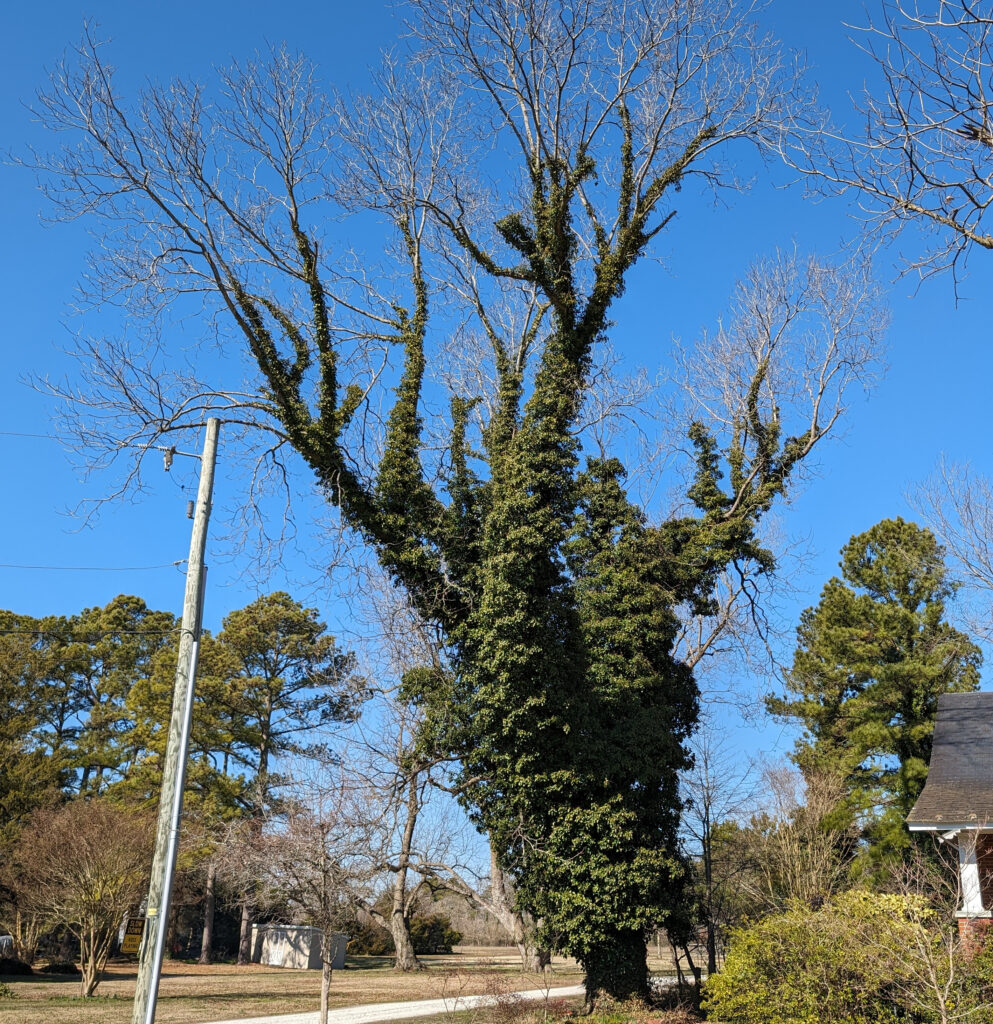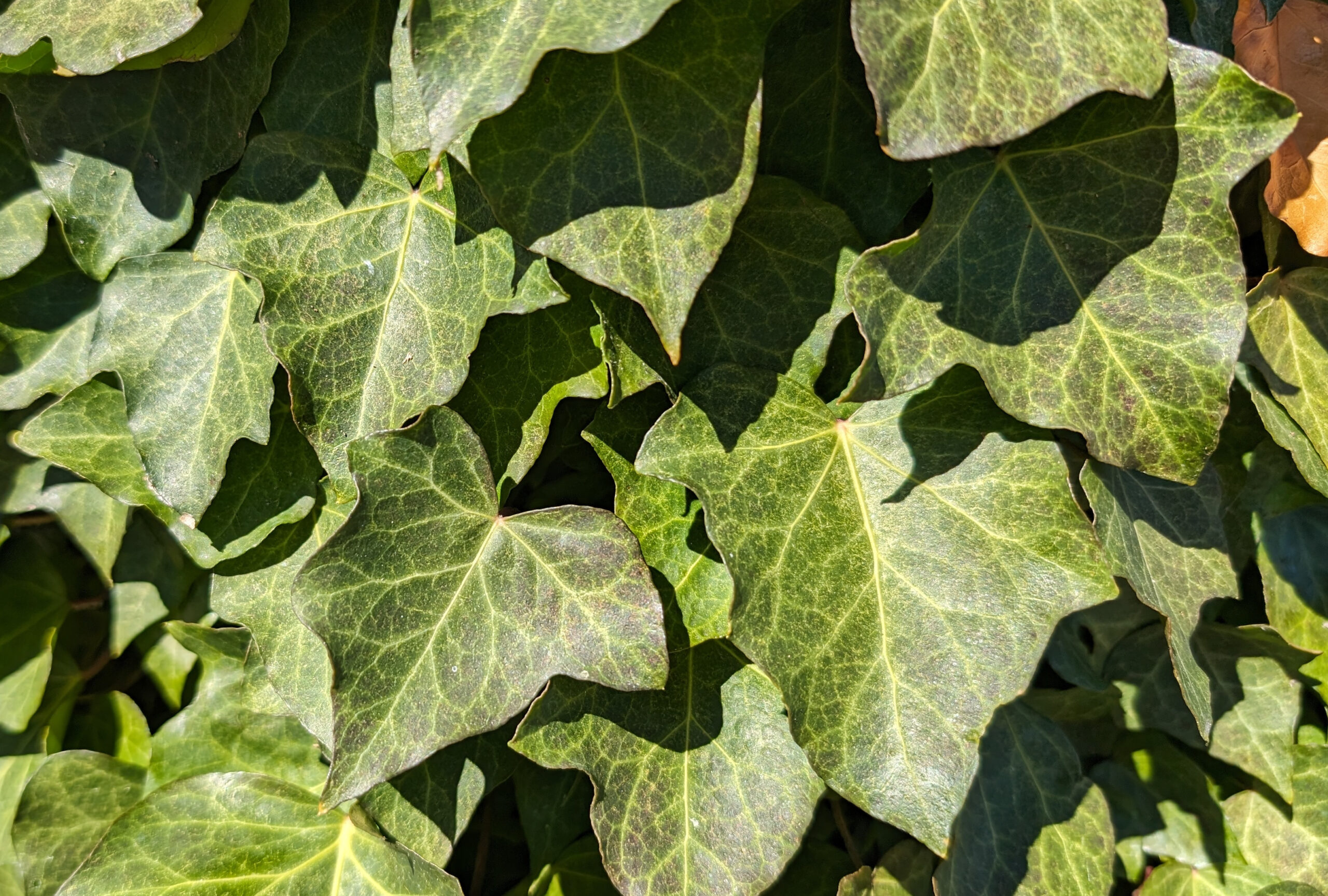One of the first chores I remember as a child was mowing the lawn. The lawn, if you could even call it that, was a sparse and weedy affair, all in heavy shade from large oak trees. It wasn’t very satisfying, mowing this lawn. Mowing did not create any kind of attractive order; all mowing did was knock down the taller clumps of weed and grass. It seemed a futile effort. As you might imagine, I really disliked mowing this “lawn.”
Now, all around the edge of the yard grew English Ivy (Hedera helix), which of course I didn’t have to mow. So it was only natural that I encouraged the ivy to take over the yard, carefully not mowing any of the tendrils as they spread. Every year, the area I had to mow was smaller, until finally the entire yard was covered in Ivy! No more mowing, and as a bonus, any leaf or branch that fell into that ivy bed soon disappeared beneath the glossy green sea of ivy leaves. No more raking either!

English Ivy is a popular plant, featuring dark green glossy leaves, and is easy to care for. Outdoors, it makes an attractive and effective ground cover. But ivy has a dark side. I didn’t know it at the time, but I had helped create what is now known as an “ivy desert.” Nothing grew in that yard but ivy, no other plant could compete. No plants with flowers or seeds, no biodiversity, just ivy. The ivy bed choked out everything else.
Today, English Ivy is recognized as an invasive plant in the US. It spreads readily, grows quickly, does well in deep shade or full sun, and is tenacious once established. A bed of ivy will choke out most other plants, eliminating the variety of different species that would be present in a healthy environment.
As if ivy’s ability to take over and sterilize a landscape wasn’t bad enough, ivy has some tricks that make it even more of a problem. Ivy is an unusual plant in that it has two distinct “modes” of growth. It starts out as a vine, creeping across the lawn and climbing up any tree. It typically continues as a vine for a decade or two, but once it has climbed high enough into a tree, it “breaks bad” and adopts a shrubby nature, expanding outward from the host branches. This creates a thick choking cover in the tree, and it is only a matter of time until the ivy smothers and kills the host tree.

Ivy is also bad for buildings, where its aerial rootlets will probe at any crack or chink and over time can do major damage as it traps moisture and pulls the building apart. You definitely don’t want this stuff growing on your house.
English Ivy, along with other invasive plants, present a very serious threat to our environment. By choking out the plants that native insects, birds, and other creatures depend on, ivy is contributing to the destruction of our natural world. Because we depend on our natural world for our own survival, it follows that invasive plants are bad for us.
Birds, insects and other animals are in decline; disappearing from our world. Ivy provides little to no benefit to our native animals, and so they starve. Invasive plants like ivy are helping to drive the environmental disaster that is unfolding around us.
For my part, knowing what I now know, I’ll be out back, cutting the ivy vines that grow up the trees, and ripping it out of the ground. It may even be worth using herbicides, carefully applied, to be rid of the scourge that is English Ivy. I still don’t like lawns much, but that’s another story.
